Related Research Articles
Dmitri Shostakovich's String Quartet No. 8 in C minor, Op. 110, was written in three days.
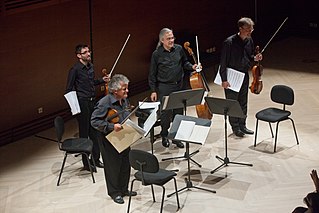
The Arditti Quartet is a string quartet founded in 1974 and led by the British violinist Irvine Arditti. The quartet is a globally recognized promoter of contemporary classical music and has a reputation for having a very wide repertoire. They first became known taking into their repertoire technically challenging pieces. Over the years, there have been personnel changes but Irvine Arditti is still at the helm, leading the group. The repertoire of the group is mostly music from the last 50 years with a strong emphasis on living composers. Their aim from the beginning has been to collaborate with composers during the rehearsal process. However, unlike some other groups, it is loyal to music of a classical vein and avoids cross-genre music. The Quartet has performed in major concert halls and cultural festivals all over the world and has the longest discography of any group of its type. In 1999, it won the Ernst von Siemens Music Prize for lifetime achievement, being the first and only group to date to receive this award.

Alvin Curran is an American composer, performer, improviser, sound artist, and writer. He was born in Providence, Rhode Island, and lives and works in Rome, Italy. He is the co-founder, with Frederic Rzewski and Richard Teitelbaum, of Musica Elettronica Viva, and a former student of Elliott Carter. Curran's music often makes use of electronics and environmental found sounds. He was a professor of music at Mills College in California until 2006 and now teaches privately in Rome and sporadically at various institutions.

Pascal Georges Dusapin is a French composer. His music is marked by its microtonality, tension, and energy.
Ezra Sims was one of the pioneers in the field of microtonal composition. He invented a system of notation that was adopted by many microtonal composers after him, including Joseph Maneri.
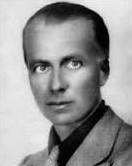
Giacinto Francesco Maria Scelsi was an Italian composer who also wrote surrealist poetry in French.

Sextet is a composition by American composer Steve Reich. The piece was written and first performed in 1984, and slightly revised in 1985.

The Helikopter-Streichquartett is one of Karlheinz Stockhausen's best-known pieces, and one of the most complex to perform. It involves a string quartet, four helicopters with pilots, as well as audio and video equipment and technicians. It was first performed and recorded in 1995. Although performable as a self-sufficient piece, it also forms the third scene of the opera Mittwoch aus Licht.
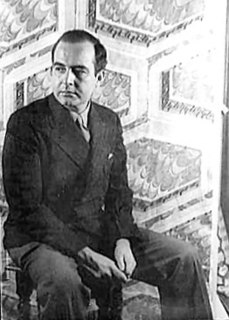
Agnus Dei is a choral composition in one movement by Samuel Barber, his own arrangement of his Adagio for Strings (1936). In 1967, he set the Latin words of the liturgical Agnus Dei, a part of the Mass, for mixed chorus with optional organ or piano accompaniment. The music, in B-flat minor, has a duration of about eight minutes.
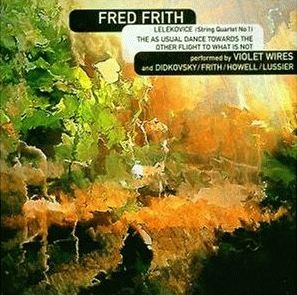
Quartets is a 1994 studio album by English guitarist, composer and improvisor Fred Frith. It consists of two compositions by Frith, "Lelekovice, String Quartet #1", performed by the Violet Wires String Quartet, and "The As Usual Dance Towards the Other Flight to What is Not", performed by an electric guitar quartet. Frith performs with the guitar quartet, but not with the string quartet.

Eleventh Hour is a double album by English guitarist, composer and improvisor Fred Frith. It comprises five long pieces composed by Frith between 1990 and 2001, and was performed by the Arditti Quartet (strings) with Uwe Dierksen (trombone), William Winant and Frith, in Germany and the United States in 2003 and 2004. Frith only plays on the second CD of this album.
String Quartet in Four Parts is a string quartet by John Cage, composed in 1950. It is one of the last works Cage wrote that is not entirely indeterminate. Like Sonatas and Interludes for prepared piano (1946–48) and the ballet The Seasons (1947), this work explores ideas from Indian philosophy.
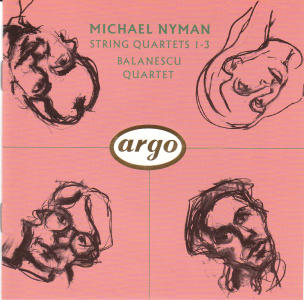
String Quartets 1–3 is a 1991 album by the Balanescu Quartet and the fifteenth release by Michael Nyman. It is the second album of his music on which he did not perform or conduct, though he does provide liner notes. String Quartet No. 3 is built out of Out of the Ruins and became a fixture in numerous Nyman film scores in the 1990s.
American composer Elliott Carter's String Quartet No. 5 is a composition for string quartet. The work was composed between January and July 1995, as a commission for the Arditti Quartet by the city of Antwerp, by the Wittener Tage für neue Kammermusik, by the Festival d'Automne à Paris, and by Lincoln Center, New York. It was premiered by the Arditti Quartet in Antwerp at deSingel International Art Centre on September 19, 1995.
The Abel-Steinberg-Winant Trio is a trio, formed in 1984, resident at Mills College, and named for its members; violinist David Abel, pianist Julie Steinberg, and percussionist William Winant. They specialize in new music from the Americas and the Pacific Rim.
Ainsi la nuit is a string quartet written by the French composer Henri Dutilleux between 1973 and 1976. It was premiered in 1977 by the Parrenin Quartet.
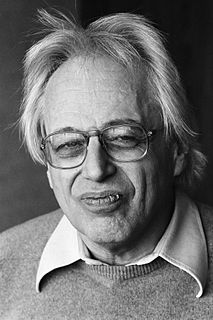
The Hungarian composer György Ligeti published three string quartets: two string quartets proper and a student piece from 1950 published toward the end of his life. The first two quartets represent his early period, inspired by Béla Bartók, and middle period, which was largely micropolyphonic.

Hallowe'en, also initially entitled Allegro vivace: Hallowe'en, is a short composition for piano quintet by American composer Charles Ives. It was probably composed in 1907 and was part of Three Outdoor Scenes, a collection of pieces that also included Central Park in the Dark.
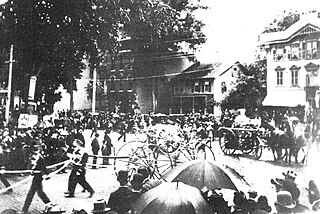
The Gong on the Hook and Ladder or Firemen's Parade on Main Street, normally shortened as The Gong on the Hook and Ladder and also initially entitled Allegro moderato, is a short composition by American composer Charles Ives.

"Hymn: Largo cantabile", S. 84/1, sometimes also referred to as "Largo cantabile: Hymn" and often shortened as "Hymn", is a composition by American composer Charles Ives written in 1904. Grouped in the suite A Set of Three Short Pieces, it is published and commonly performed as a standalone work.
References
- 1 2 Curran, Alvin (1994). "VSTO". Alvin Curran: Schtyx (PDF) (Liner notes). New York: CRI. p. 4. CD668. Archived (PDF) from the original on 12 November 2022.
- 1 2 "Arditti at Mills: Perfection!", Rchrd.com
- ↑ Flegler, Joel (1995). Fanfare, Volume 18, Issue 5, p.178.
- 1 2 "List of Works", AlvinCurran.com.